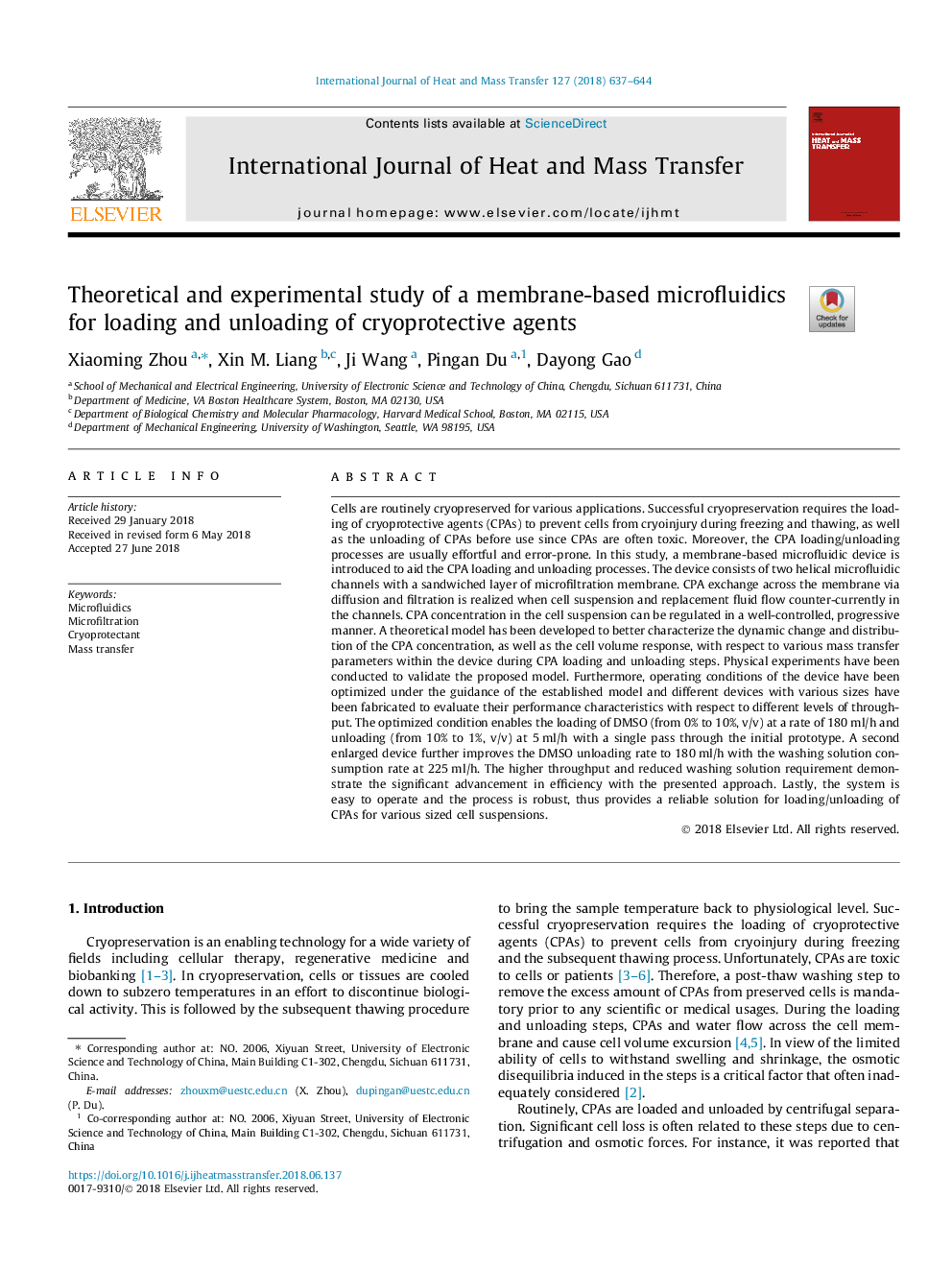| Article ID | Journal | Published Year | Pages | File Type |
|---|---|---|---|---|
| 7053809 | International Journal of Heat and Mass Transfer | 2018 | 8 Pages |
Abstract
Cells are routinely cryopreserved for various applications. Successful cryopreservation requires the loading of cryoprotective agents (CPAs) to prevent cells from cryoinjury during freezing and thawing, as well as the unloading of CPAs before use since CPAs are often toxic. Moreover, the CPA loading/unloading processes are usually effortful and error-prone. In this study, a membrane-based microfluidic device is introduced to aid the CPA loading and unloading processes. The device consists of two helical microfluidic channels with a sandwiched layer of microfiltration membrane. CPA exchange across the membrane via diffusion and filtration is realized when cell suspension and replacement fluid flow counter-currently in the channels. CPA concentration in the cell suspension can be regulated in a well-controlled, progressive manner. A theoretical model has been developed to better characterize the dynamic change and distribution of the CPA concentration, as well as the cell volume response, with respect to various mass transfer parameters within the device during CPA loading and unloading steps. Physical experiments have been conducted to validate the proposed model. Furthermore, operating conditions of the device have been optimized under the guidance of the established model and different devices with various sizes have been fabricated to evaluate their performance characteristics with respect to different levels of throughput. The optimized condition enables the loading of DMSO (from 0% to 10%, v/v) at a rate of 180â¯ml/h and unloading (from 10% to 1%, v/v) at 5â¯ml/h with a single pass through the initial prototype. A second enlarged device further improves the DMSO unloading rate to 180â¯ml/h with the washing solution consumption rate at 225â¯ml/h. The higher throughput and reduced washing solution requirement demonstrate the significant advancement in efficiency with the presented approach. Lastly, the system is easy to operate and the process is robust, thus provides a reliable solution for loading/unloading of CPAs for various sized cell suspensions.
Related Topics
Physical Sciences and Engineering
Chemical Engineering
Fluid Flow and Transfer Processes
Authors
Xiaoming Zhou, Xin M. Liang, Ji Wang, Pingan Du, Dayong Gao,
